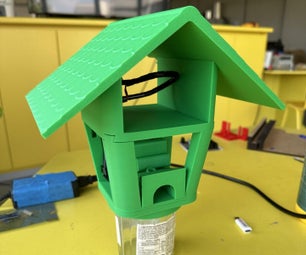Introduction: DIY Bench Power Supply With Old Computer SMPS
Hey! everyone My name is Steve .
Today i'm going to show you How to make a Bench Power Supply With Computer Power Supply
Bench Power supply is very useful in electronics field it is very easy to make it with a regular ATX power supply
Click Here to See The Video
Let's Start
Step 1: Features
Supply Output
- 3.3 V @ 30A
- 5 V @ 25A
- 12 V @ 10 A
it's my specification all it's depend upon your power supply power output
Additional
- Green Led ( power indicator )
- Toggle Switch (On/Off)
Safety Features
- Short circuit Protection
- Over load Protection
- Over Heat Protection
All this Built in your ATX Power Supply
Step 2: Stuff I Used
- SMPS
- Binding post click
- Led with 220ohms resistance
- toggle switch
Step 3: Opening
Open 4 screws from the top ( see the picture )
Step 4: Drilling
- Mark the position for drilling with a marker ( see the picture )
- First Drill with small drill bit and then go for bigger
- Drill total 8 holes ,6 for binding post , 1 for led , 1 for switch
Step 5: Installation
- First start with installing the binding post ( see the picture )
- then install the led
- and then install the switch
Step 6: Connection Led & Switch
- First cut green and black wire and solder them on the toggle switch ( see the picture )
- And then cut orange and black wire and solder with a 220 ohms resistance on the LED
Step 7: Cutting
- Cut 3 Yellow & 3 Black , 3 Red & 3 Black , 3 Orange & 3 Black wire
- Cut the Length to reach all the connection
- Don't cut too small
Remember
- Yellow wire gives you 12 V
- Red wire gives you 5 V
- Orange wire gives you 3.3 V
Step 8: Wire Grouping
- Twist the 3 wires and make a bunch ( see the picture )
- Do The same with all the wires
- To make it looks less messy
Step 9: Connect
- Connect those 6 wire to the binding post and tighten the nut ( see the picture )
Connection
- Yellow & Black - Black And Red Terminal of first Group
- Red & Black - Black And Red Terminal of Second Group
- Orange & Black - Black And Red Terminal of Third Group
see the picture for more information
Step 10: Cutting
- Trim off the unused wire ( see the picture )
Step 11: Securing
use a cable tie to tie loose wire ( see the picture )
Step 12: Closing
Now close the cabinet and tight 4 screws
Step 13: Finishing
Now mark the terminal
- First binding post 12V
- Second binding post 5V
- Third Binding post 3.3V
- Led
- Switch (On/Off)
Click Here to See The Video
You Just Made It
Now just Plug the power and enjoy
Thank you for visiting my Instructables
Stay tuned for next Projects











